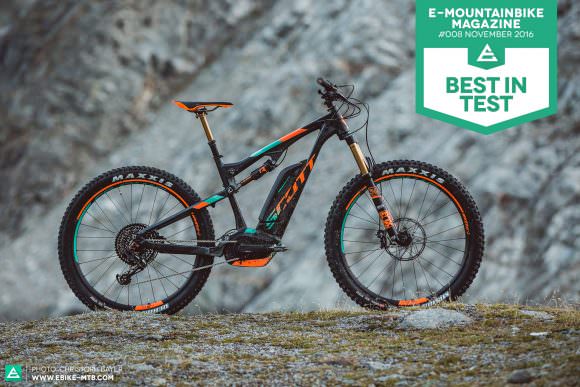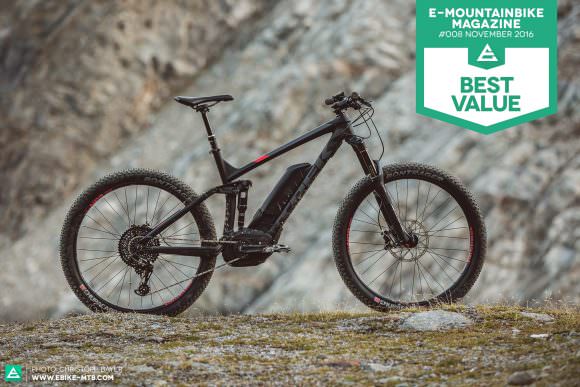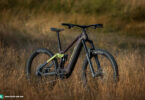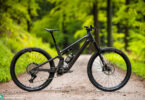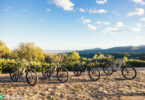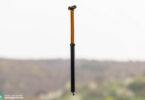E-mountain bikes are pushing the boundaries within the world of mountain biking right now, flaunting technology from top to toe. We’ve pooled the ten hottest new E-MTBs for 2017 and given them a thorough check for innovation and teething problems. So which bike has come up trumps and shimmies with clever details like the unstoppable iPhone, and which ones are likely to go up in flames like the Samsung Galaxy Note 7?
Find other 2017 models in our second big group test with 14 E-MTBs
E-biking is in a state of flux. Not long ago, most people purely associated e-biking with pensioners on sit-up-and-beg bikes. But we’ve moved on a lot since then, and e-bikes are a growing presence across a far broader spectrum of society, making them a staple image in our urban spaces already. But E-MTBs still have an avant-garde side to them, and are arguably responsible for drastically altering the hows and whos of how many people partake in sport and leisure.
There’s a lot of momentum in the development of E-MTBs right now, and this group test is testament to that. These ten models share very little in common with their ancestors, which we initially tested here at E-MOUNTAINBIKE Magazine back in 2013. A lot has progressed over the last three years, and many brands are now earning more than 50% of their turnover with the sale of E-MTBs. So it is not surprising that many companies are expanding their development teams, recruiting new creative minds and innovative bike developers to meet the demand and service the future; these new bikes aren’t just proof of their development efforts, but of ambition.
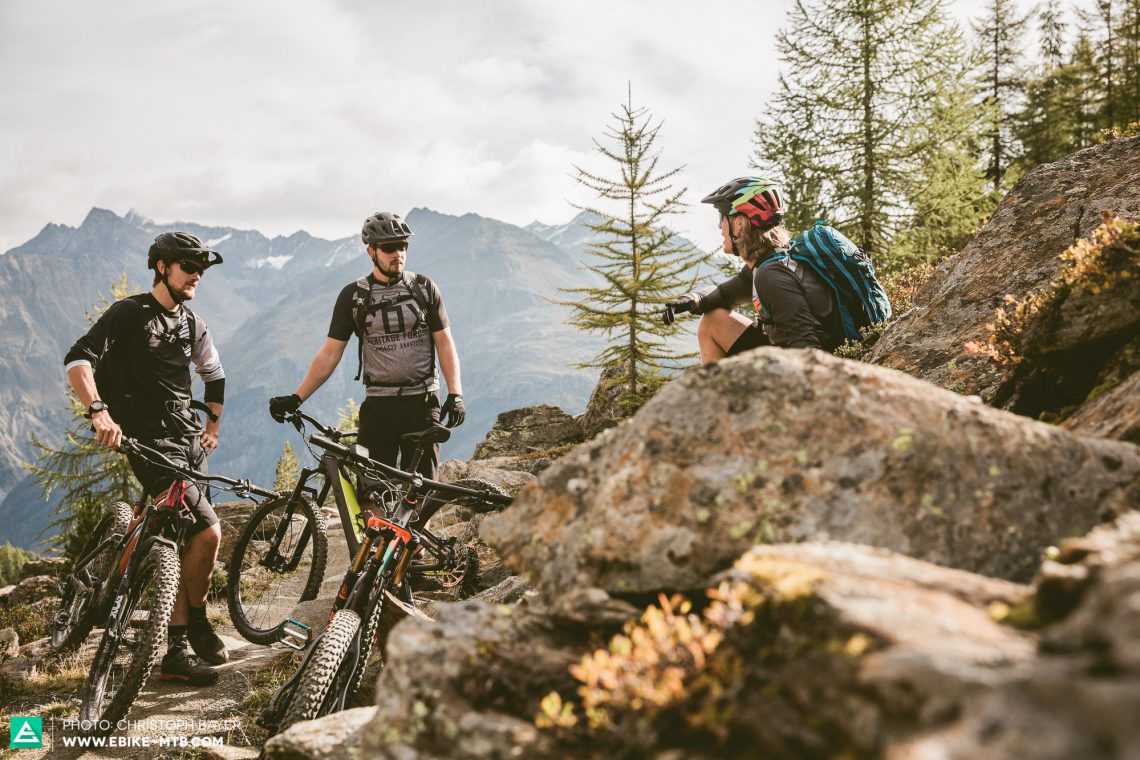
The competition is hotting up
Over the last few weeks Shimano have been making some serious waves with the launch of their own E-MTB motor system. Dubbed the STEPS E8000 MTB, this system doesn’t win on power (which is comparable to a Bosch Performance CX motor), but instead the hype is in the way Shimano have integrated the display, the ergonomics of the control unit, and the compact design of the motor. That final element is crucial; the compact size grants more freedom to bike developers, allowing them to create bikes with optimised geometry that’ll improve how a bike rides.
| Bosch Performance CX | Brose | Shimano Steps E8000 | Yamaha PW-X | |
|---|---|---|---|---|
| Power | 250 W | 250 W | 250 W | 250 W |
| Battery capacity | 300 – 500 Wh | 310 – 630 Wh | 504 Wh | 500 Wh |
| Torque | max. 75 Nm | max. 90 Nm | max. 70 Nm | max. 80 Nm |
| Motor weight | < 4.0 kg | 3.4 kg | < 2.9 kg | 3.1 kg |
| Battery weight | 2.6 kg | 1.9 – 3.9 kg | 2.65 kg | ≈ 3 kg |
| Assist levels | 4 | 3 | 3 | 5 |
| Assist levels gradation | 50 / 120 / 210 / 300 % | manufacturer-specific | Boost 300 % / Rest: n/a | 50 / 100 / 190 / 280 / 320 % |
| Driving experience | powerful | natural | powerful | powerful |
| App control | no | yes | in progress | no |
| Pushing aid | yes | yes | yes | yes |
| Recharging time time (500 Wh-Akku) | 50 % – 2 h / 100 % – 4.5 h | manufacturer-specific | 80 % – 2 h / 100 % – 5 h | 100 % – 4.5 h |
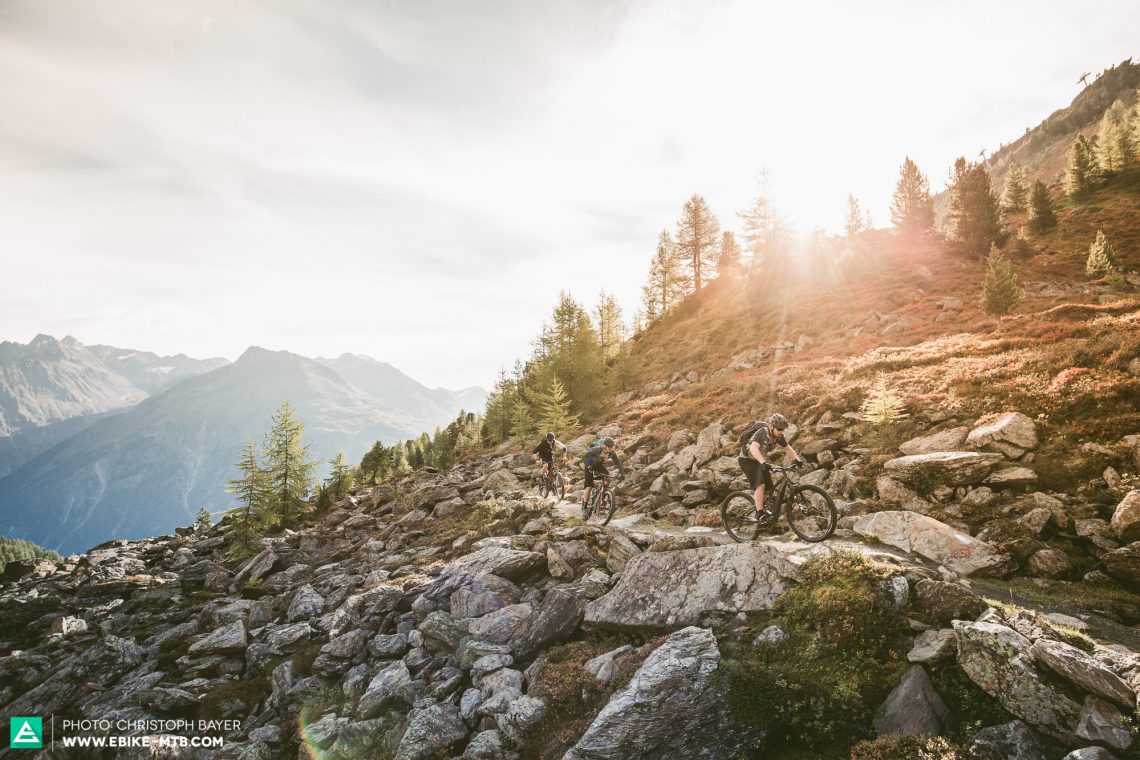
„Many brands are now earning more than 50% of their turnover with the sale of E-MTBs“
[emaillocker id=”14156″]New concepts, new materials, and new potential
One thing is certain: every E-MTB needs a battery, and its size and location are up to the manufacturer. Take, for example, those batteries located on the downtube, which usually are the least aesthetically pleasing ones, the least well integrated, and the most responsible for raising the centre of gravity and sacrificing the space for a bottle cage. More and more brands are opting to place the battery either in – or under – the downtube. Specialized have nailed the aesthetics here and come up with the most thought-out solution, although it comes at the cost of the bike’s weight and it’s admittedly significantly heavier than ROTWILD’s approach. Cannondale have arguably created a practical and functional offering, but none of our test riders were keen on its visuals. On the Samedi 27 Race 9, Moustache’s carbon frame has integrated the Bosch battery superbly, but it comes with a stonking price tag and didn’t deliver any noticeable advantages on the trail in terms of handling or weight.

Enough categorising (or at least in the conventional sense)
Categorising as we know it from conventional mountain bikes is dead – for multiple reasons. Until now, mountain bikes have tended to be categorised based on their efficiency and suspension, but this approach doesn’t work with E-MTBs. What use is a super-lightweight cross-country bike with 100 mm of travel if it’s got a powerful mid-drive motor between its legs? And can a downhill bike really be called a downhill bike if you can still pedal effortlessly up a climb of 1,000 metres? Then there’s the issue of too many chefs in the kitchen these days, with each chef christening dishes with different names: ‘performance,’ ‘sport,’ and ‘active’ meet ‘extreme off-road,’ ‘advanced off-road,’ ‘light off-road,’ and ‘all-road.’ Where are the real differences – if there are any? Other brands simply lump E-MTBs into one category alongside the whole spectrum of conventional mountain bikes. There’s a real demand for a solution to help orientate not only consumers, but also the industry; riders can’t choose the right bike if they don’t have a clear and concise image of what’s out there and what could meet their needs.
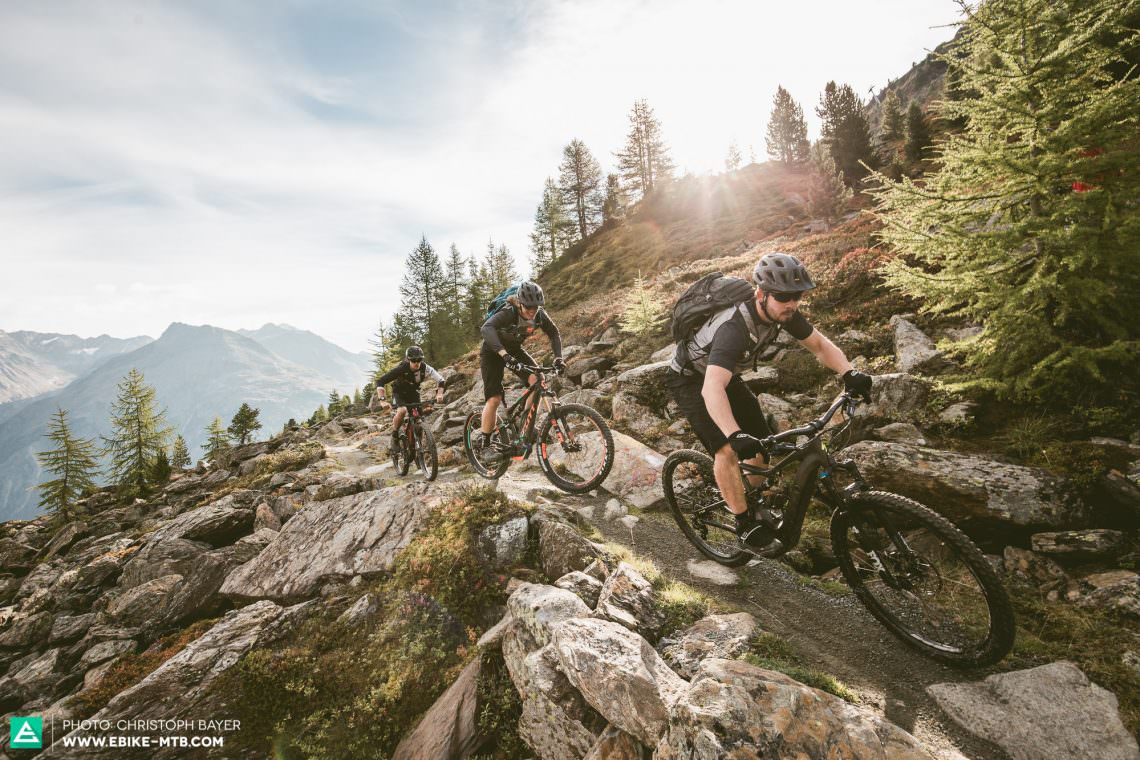
An E-MTB weighs what it weighs
The question of how much an E-MTB weighs is basically irrelevant (although we admit that a 500 g difference on a conventional bike might make a slight difference). When the weight is already up in the high double figures, then the difference between 21.5 kg and 22.2 kg is largely immaterial. This group test saw a 12% difference between the lightest and the heaviest bikes on test. It’s not a negligible difference either, as sometime those extra grams come courtesy of more functional and more stable components, which surely makes them a good investment that’ll improve the handling much more than just fitting a slightly lighter part.
Essential: the right spec
Broken chains, overheated brakes, ripped tires – issues like these are all too often the order of the day when it comes to E-MTBs, but this doesn’t have to be the case! With the EX1 drivetrain system and the Guide RE brakes, SRAM have developed two products specifically for E-MTBs, and these perform just as brilliantly as FOX’s brand new e-bike-specific 34 and 36 forks with reinforced castings and stiffer stanchions. Of course, these products are far from definitively faultless (such as those substantial gaps between the gears on the EX1), but they’re already responsible for significant gains when it comes to their performance against the rest of the market, particularly when it comes to increased durability.
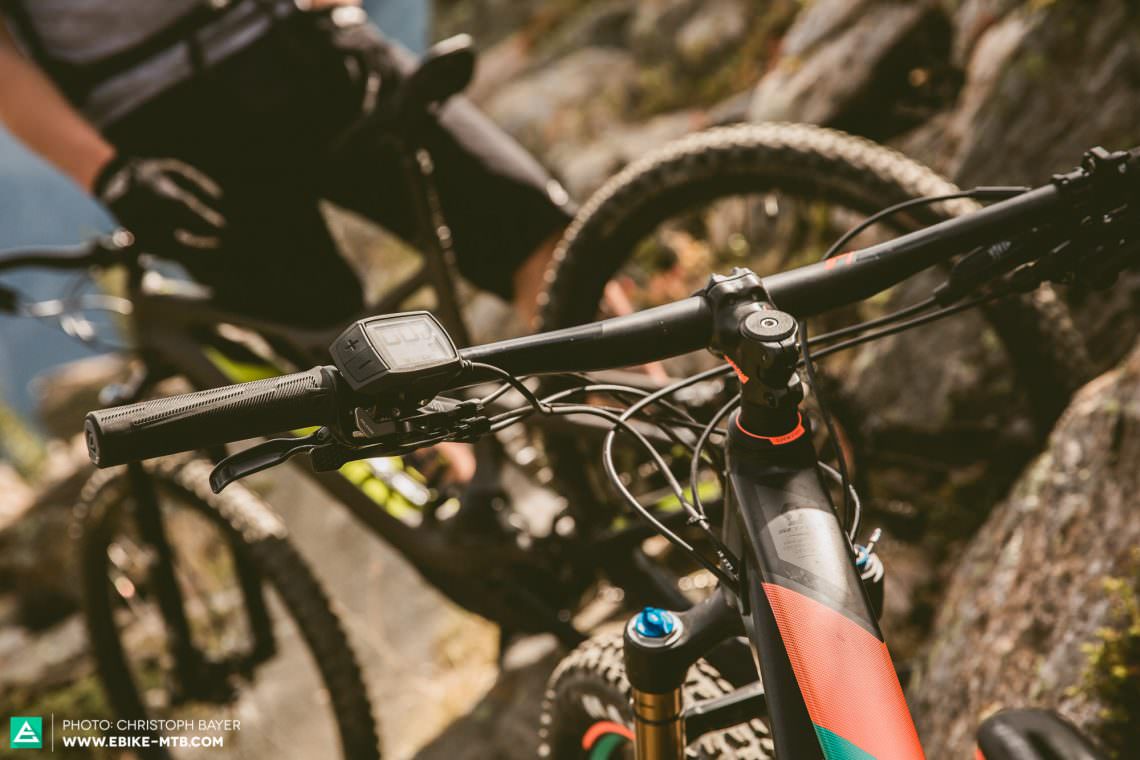
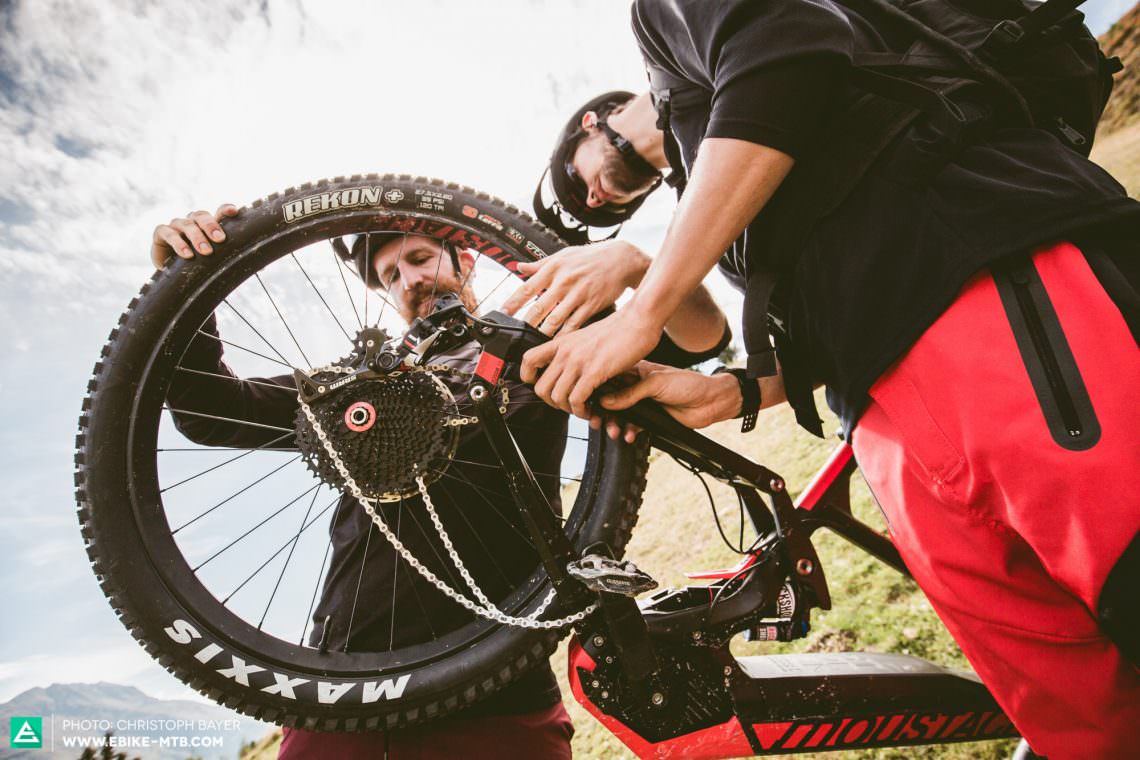
Battery range is what you make of it
What’s the range of the battery? One question, no single answer. Range depends on a multitude of factors: weight, temperature, tire choice, level of pedal assist, cadence, and more. Take it from Bosch, who’ve clearly outlined it on their website. Then there are brands like ROTWILD and Specialized, who offer clients the opportunity to set up their levels of pedal assist with assistance from the retailer so that they’re best suited to the rider. This, to us, makes perfect sense and allows riders the opportunity to glean the maximum performance from their batteries.
„E-MTBs have never been this good before, and their prices have never been this low“
Plus-size tires are here to stay
If you were still in any doubt as to the advantages of plus-size tires, then surely next season’s market dominance will convince you: nine out of the ten bikes in this group test roll on 2.8″ and 3.0″ width tires. The advantages: increased comfort, control, and traction. The MAXXIS tires are the most impressive, dishing up bags of grip and the highest level of stability. But on the flip-side, plus-size tires do have some disadvantages, seeing them struggle in muddy conditions and deep, churned-up gravel.
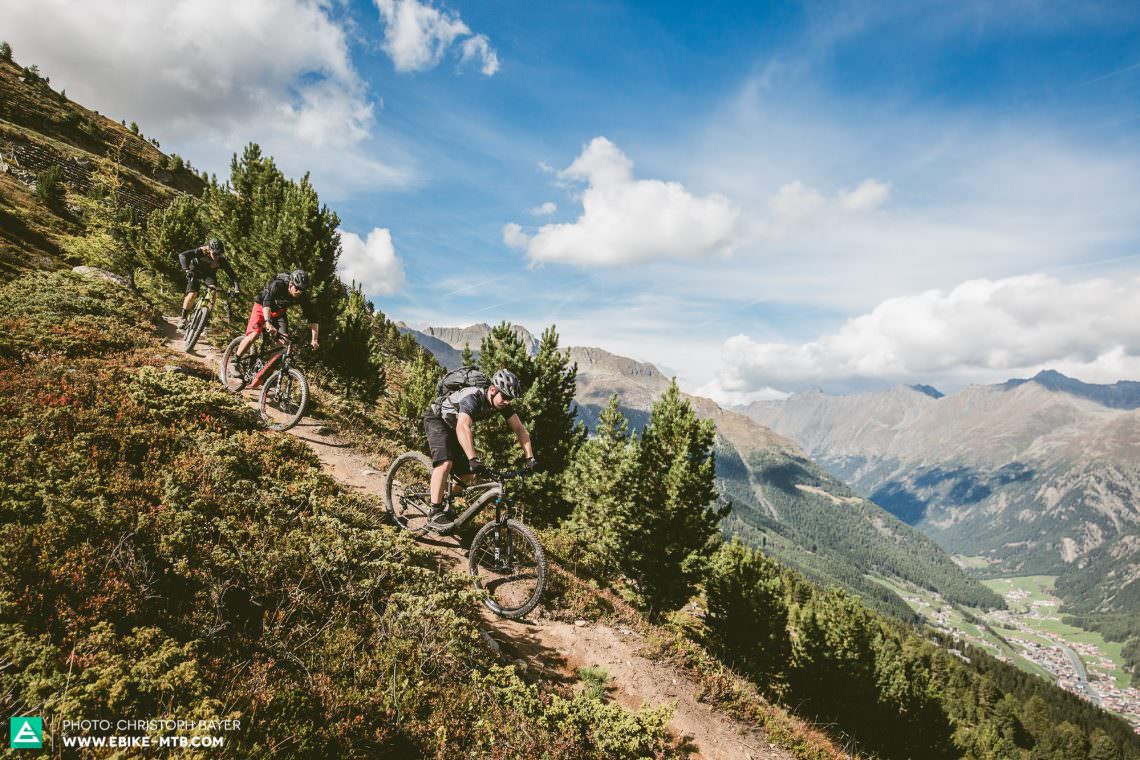
Better bikes for less money
This is surely the best news to emerge from this group test: E-MTBs have never been this good before, and their prices have never been this low! While a quick glance at price tags in the past could have led to premature balding, total hair loss is unlikely to be a result of this new crop of bikes – although there are some glaring differences in pricing.
[/emaillocker]The bikes on test
| Bike | Price | Weight | Motor | Battery |
|---|---|---|---|---|
| Bulls Six50 E FS3 | 4,499 € | 23.80 kg | Bosch | 500 Wh |
| Cannondale Moterra 1 | 5,999 € | 23.23 kg | Bosch | 500 Wh |
| CUBE Stereo Hybrid 140 HPA 27.5 SLT | 5,699 € | 22.03 kg | Bosch | 500 Wh |
| MERIDA eONE-TWENTY 900 E | 5.299 € | 21.34 kg | Shimano | 500 Wh |
| Moustache Samedi 27 Race 9 | 6,799 € | 22.25 kg | Bosch | 500 Wh |
| ROTWILD R.X+ FS EVO | 7,499 € | 20.79 kg | Brose | 518 Wh |
| SCOTT E-Genius 700 Tuned | 6,199 € | 22.37 kg | Bosch | 500 Wh |
| Specialized Turbo Levo FSR ST Comp 29 | 4,999 € | 21.77 kg | Brose | 460 Wh |
| Stevens E-Whaka+ ES | 5,599 € | 21.20 kg | Shimano | 500 Wh |
| Trek Powerfly 9 FS Plus | 5,499 € | 22.71 kg | Bosch | 500 Wh |
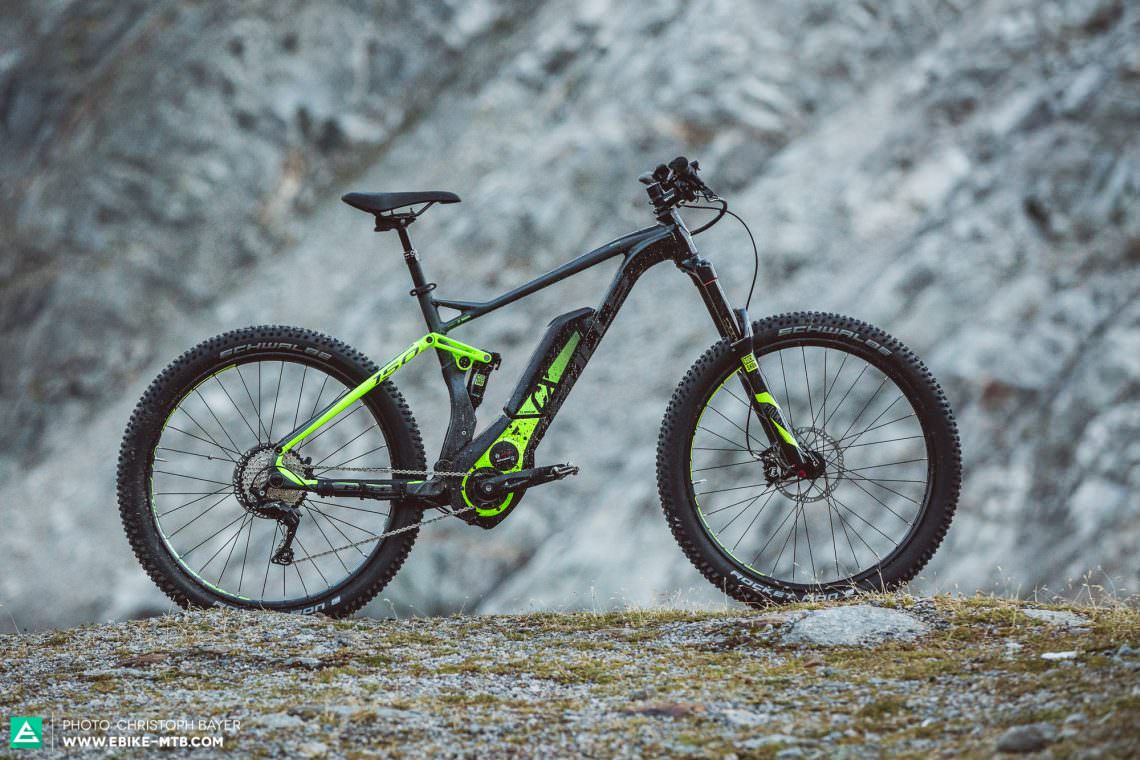
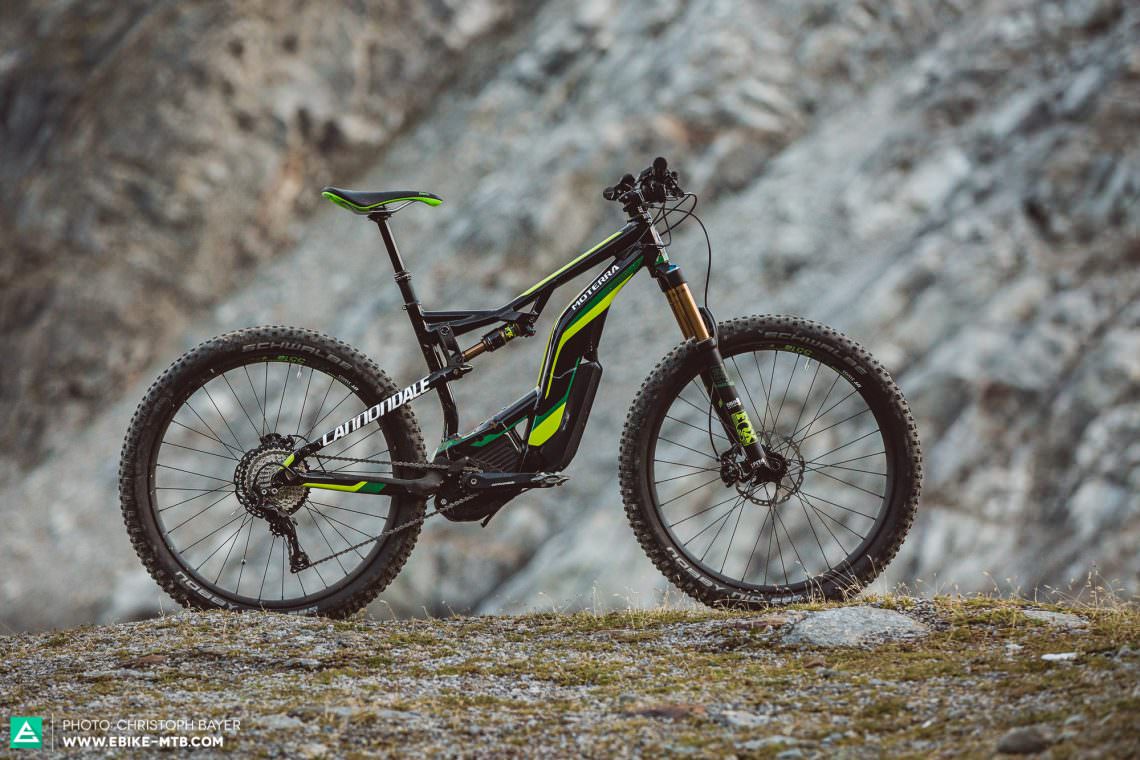
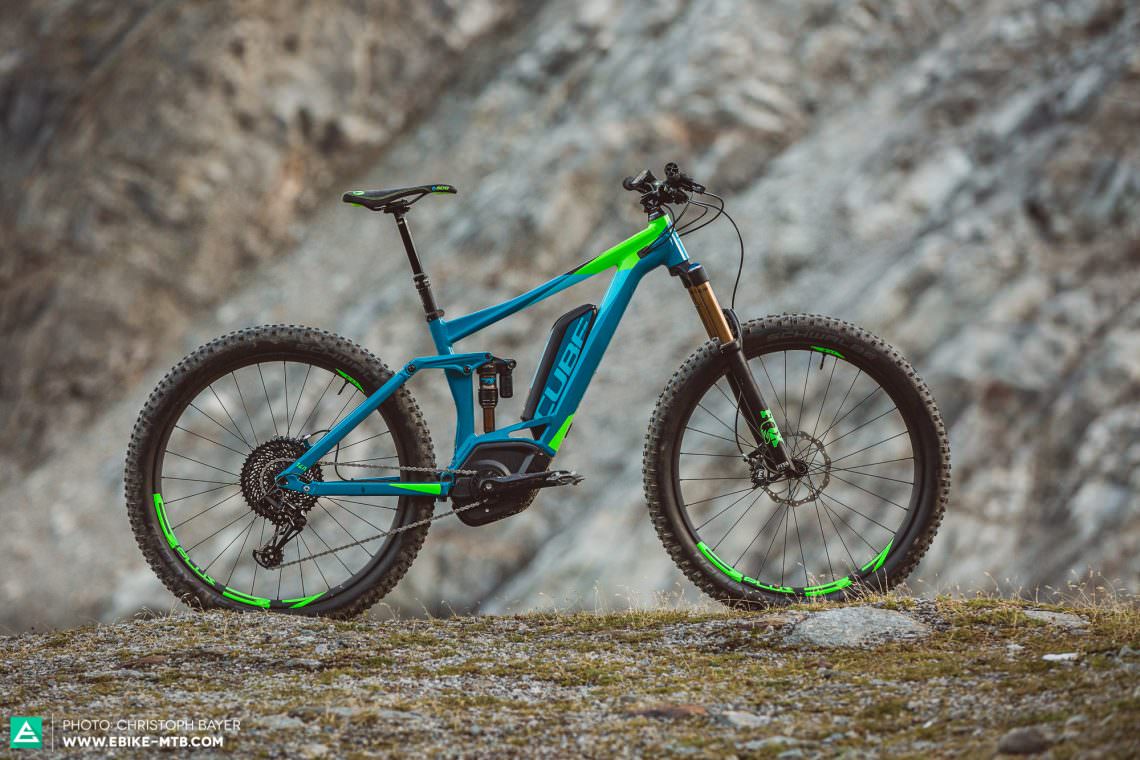
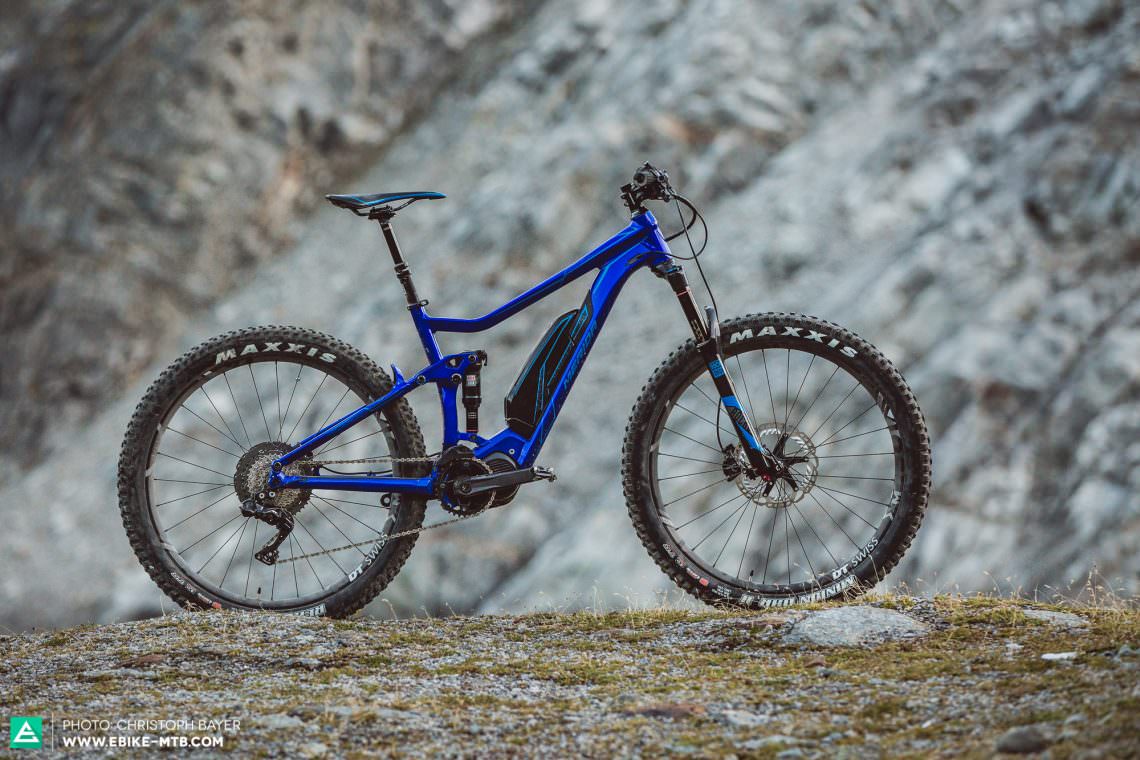
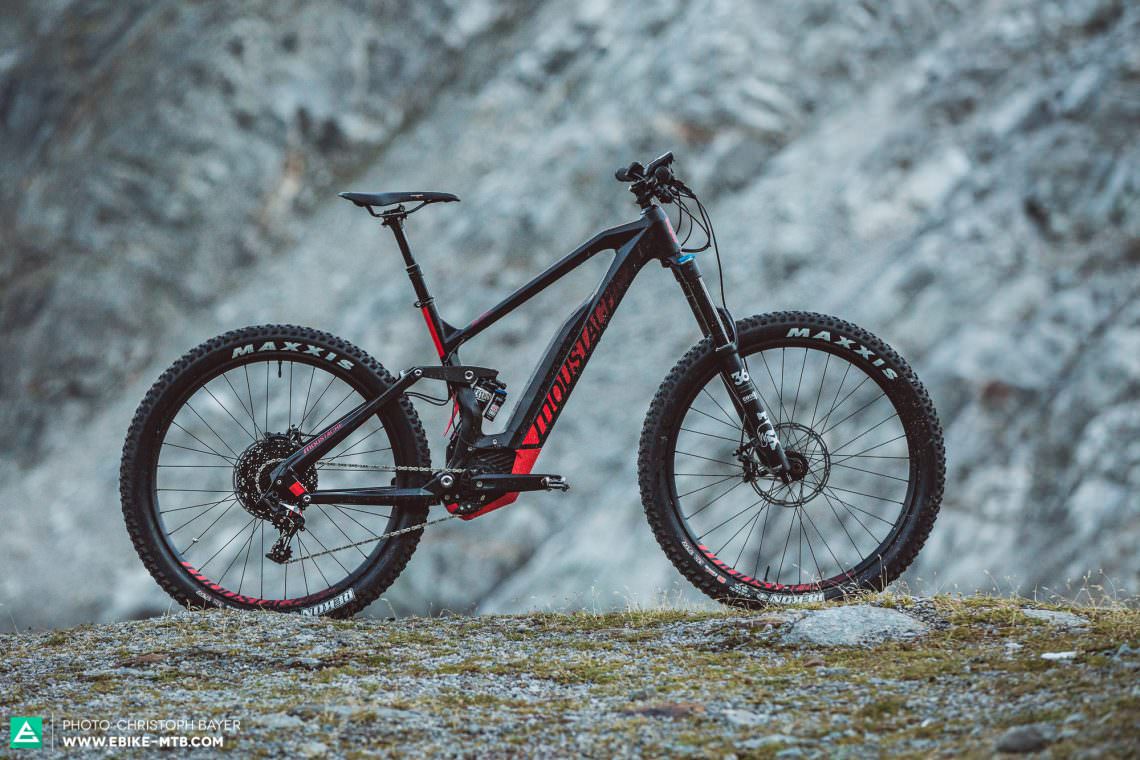
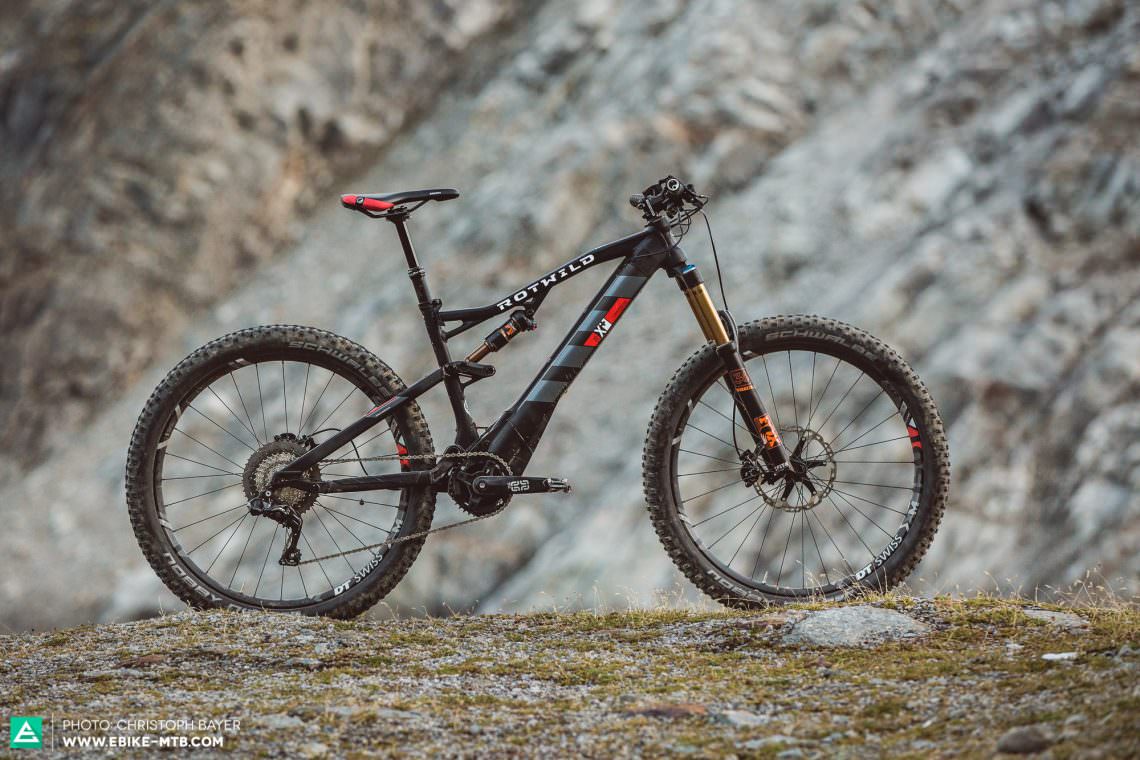
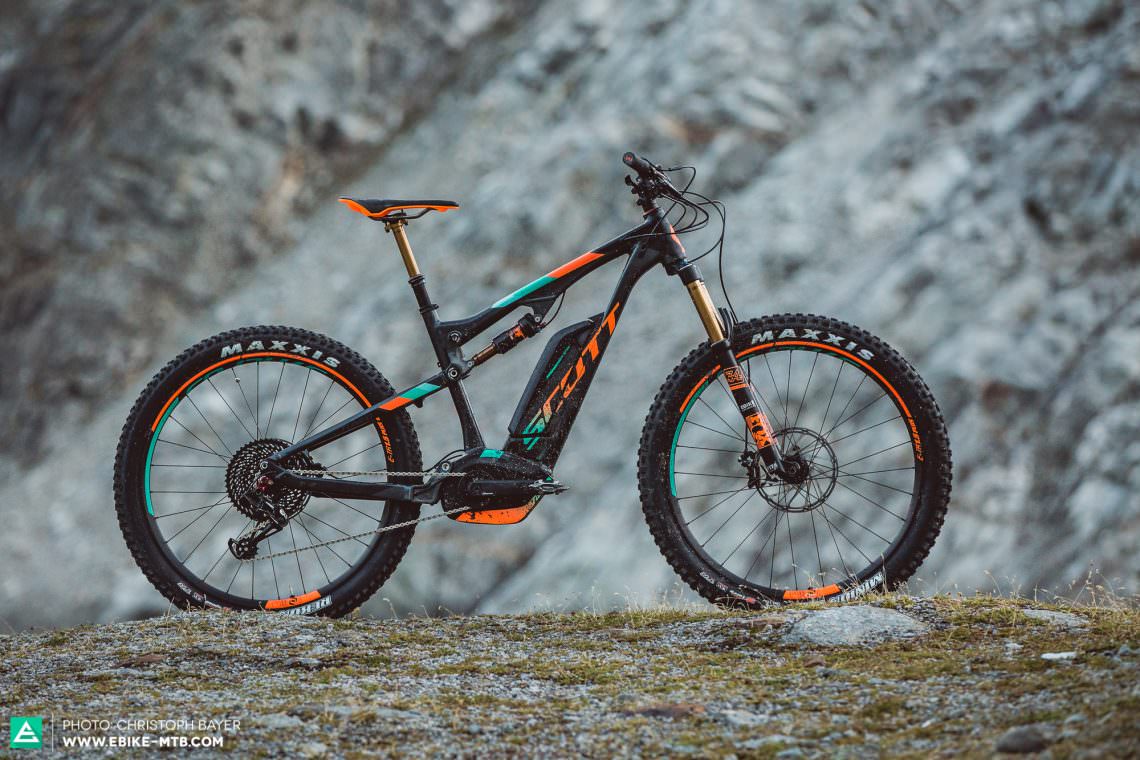
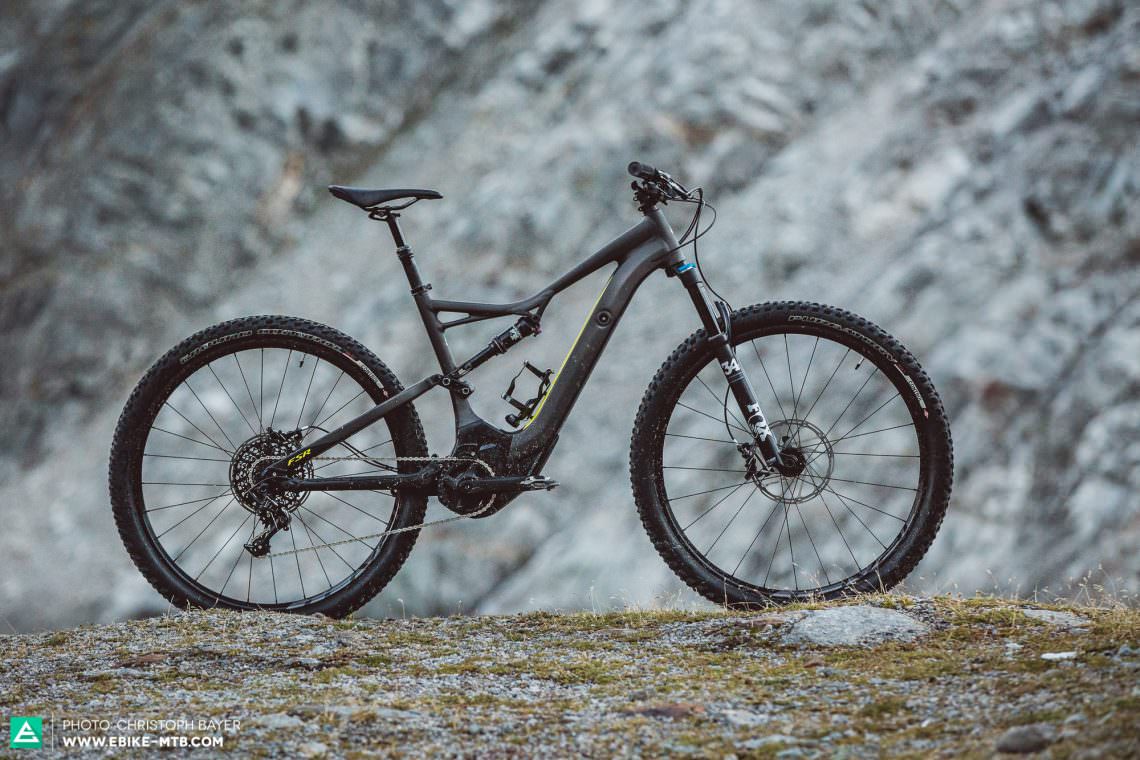
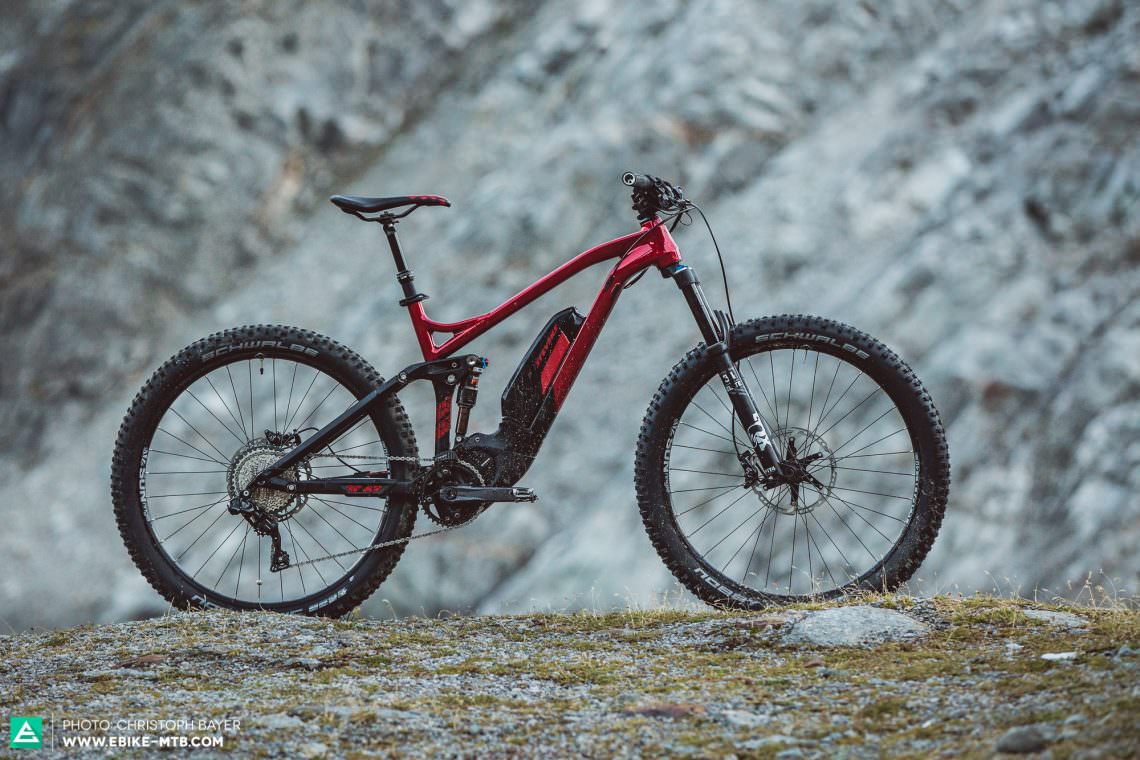
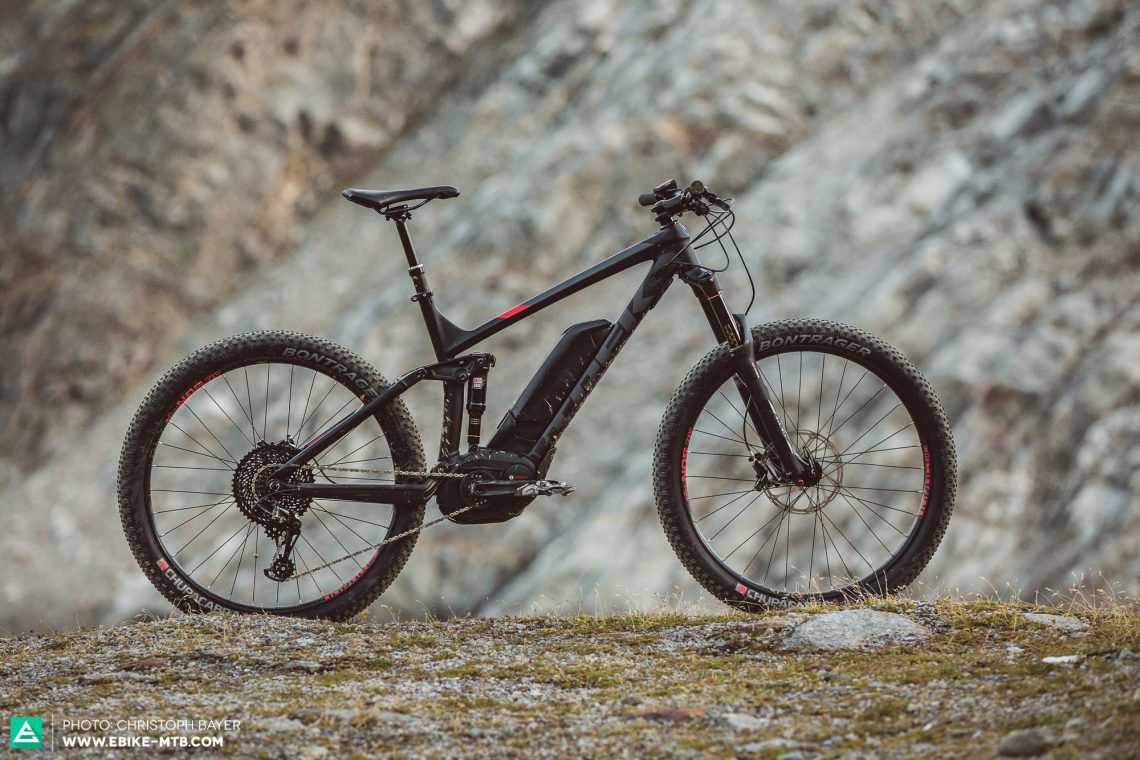
Tops & Flops
Often small details can make a huge difference: seamless integration, first-class ergonomics and carefully selected parts. Easier said than done – here are some of the tops and flops from this grouptest.
Tops
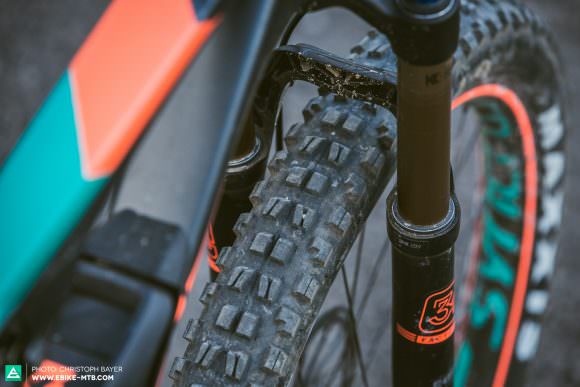
The MAXXIS Minion DHF front tire with its width of 2.8″ rides with masses of grip, huge braking traction, and precise handling.
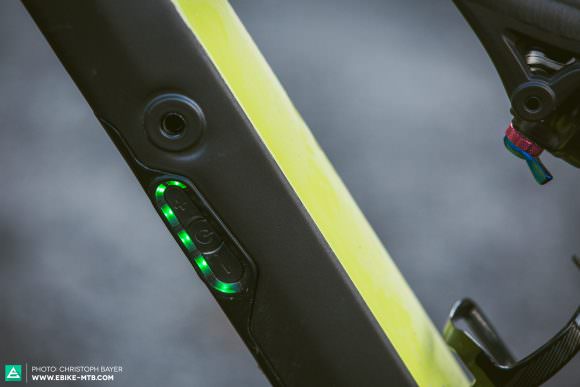
Specialized have skipped the regular bar-mounted display and use ten LEDs on the downtube to reveal the level of pedal assist and battery life. Ace! You can also connect a display or remote lever using Bluetooth if you like.
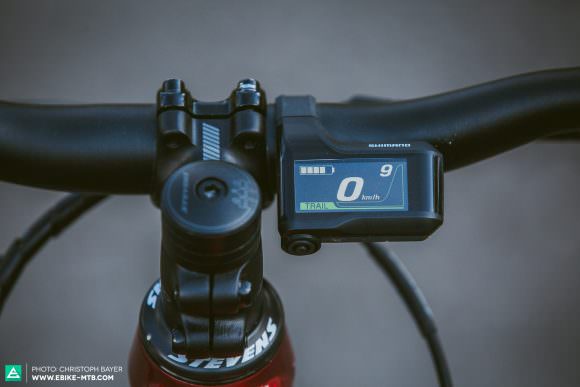
The display on the Shimano STEPS E-MTB drivetrain system reveals all the most important information and has a well-placed position behind the bars.
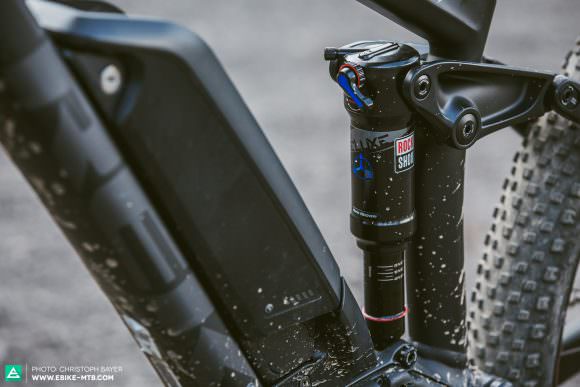
The Trek Powerfly FS 9 boasts one of the greatest rear ends on test! Responsive, forgiving, and generous with feedback – perfect!
Flops
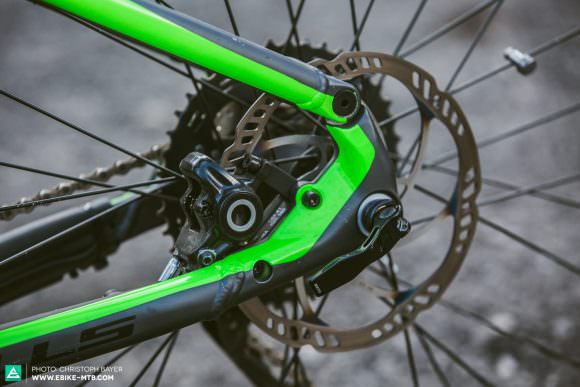
The brake mount might be visually well dialed into the frame, but unfortunately its position on the chainstay means there’s no space for a four-pot brake caliper. Given their reliance on powerful brakes, this is a major no-go for E-MTBs.
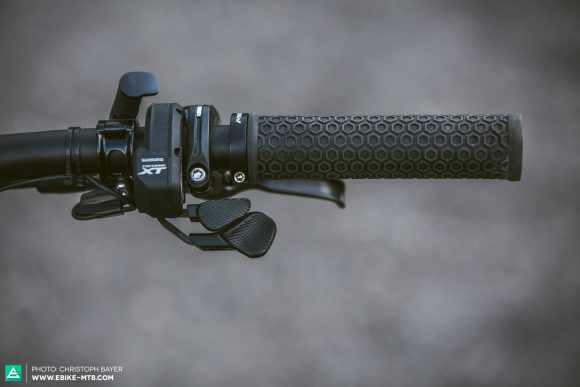
Chaos reigns on the bars, and it’s tricky to find a good spot for the RockShox Reverb dropper post’s remote lever given the presence of the Shimano shifters and brakes.
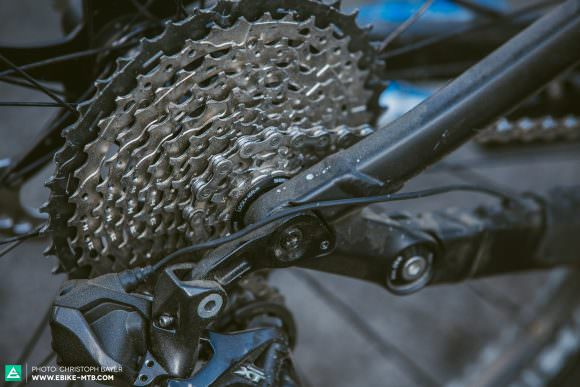
The cable for the XT Di2 shifters runs externally back to the derailleur on the Stevens. This wouldn’t be an issue for a regular gear cable, but these thinner electronic shifting cables are way more vulnerable.
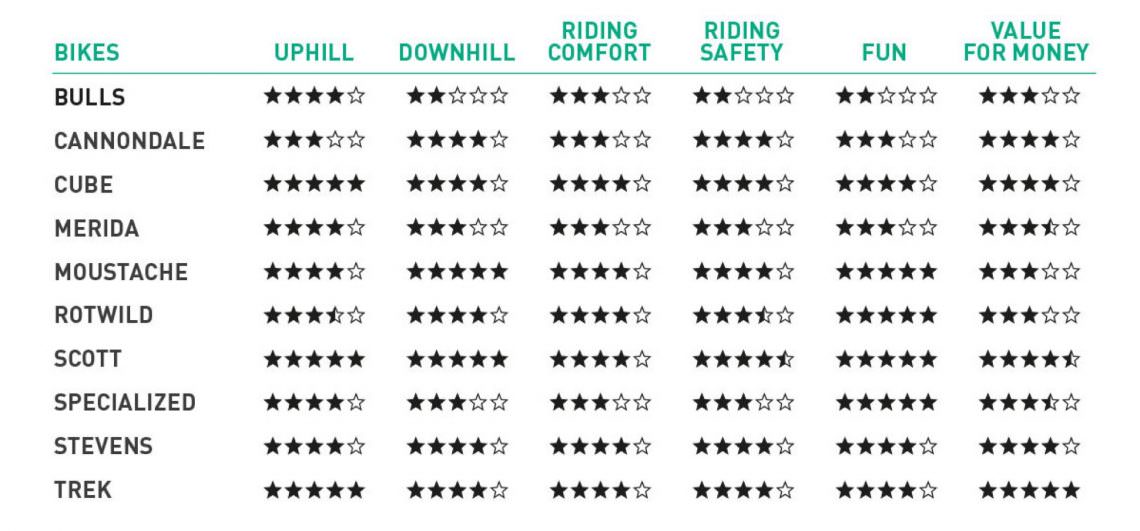
The best total package
Good news comes in pairs, with the first being that there was a standout winner, and secondly that this group test showed no signs of the feared Samsung Note 7 syndrome! Much like last year’s group test, SCOTT rolled away with the win thanks to their top-of-the-range E-Genius 700 Plus Tuned, which marries well thought-out geometry, great suspension, a tidy finish, and an even more cohesive and clever spec than most E-MTBs are likely to need! Whether it’s on a challenging trail ride, epic mountain adventure, or just cruising around a lake, the SCOTT E-Genius 700 Plus Tuned has it dialed. Test win! Almost equally as fault-free and 700 € cheaper, the all-new Trek Powerfly FS 9 Plus grabs the crown of best value!
All bikes in test: Bulls Six50 E FS3 | Cannondale Moterra 1 | CUBE Stereo Hybrid 140 HPA 27.5 SLT | MERIDA eONE-TWENTY 900 E | Moustache Samedi 27 Race 9 | ROTWILD R.X+ FS EVO | SCOTT E-Genius 700 Tuned | Specialized Turbo Levo FSR ST Comp 29 | Stevens E-Whaka+ ES | Trek Powerfly 9 FS Plus
Find other 2017 models in our second big group test with 14 E-MTBs. For E-Mountainbikes less than € 4,000, check our previous group test: What’s the best E-MTB you can buy for less than € 4,000? We test 6 leading bikes
Did you enjoy this article? If so, we would be stoked if you decide to support us with a monthly contribution. By becoming a supporter of E-MOUNTAINBIKE, you will help secure a sustainable future for high-quality cycling journalism. Click here to learn more.
Words & Photos:
















